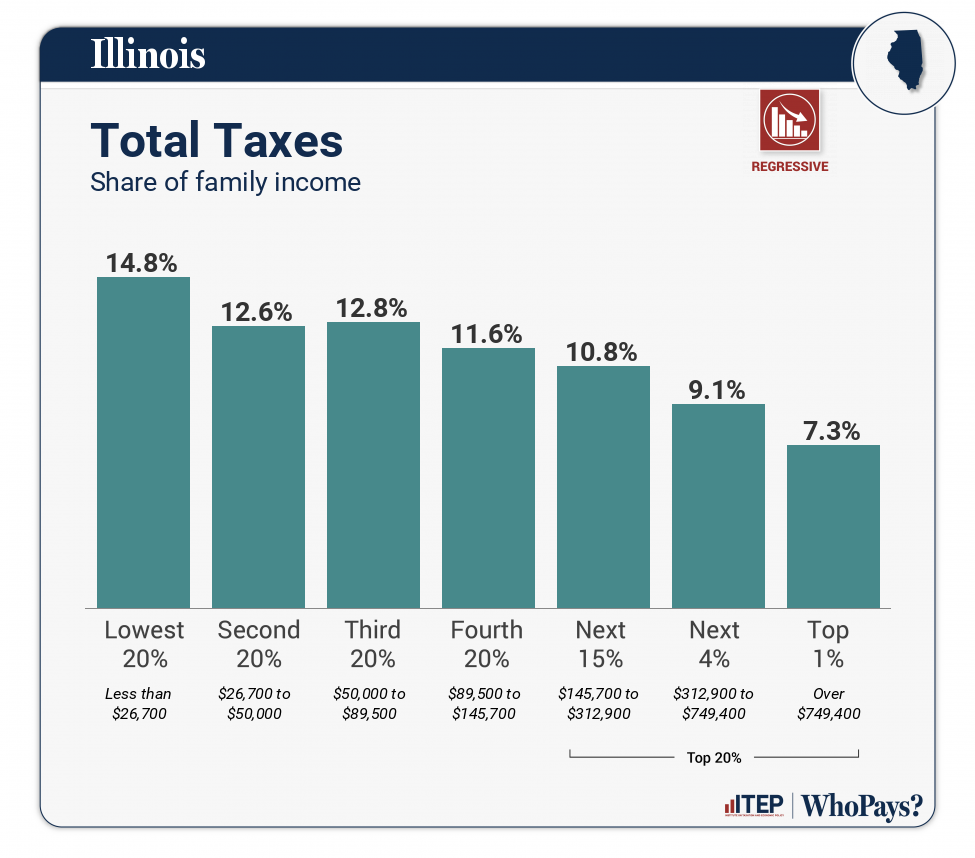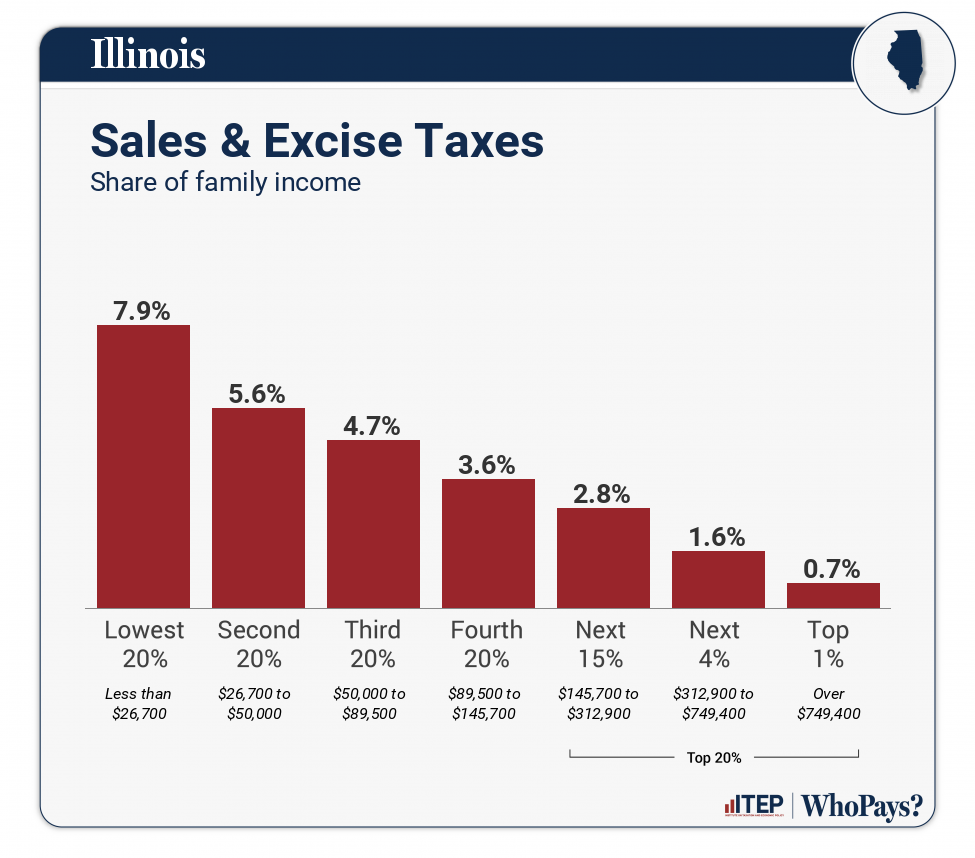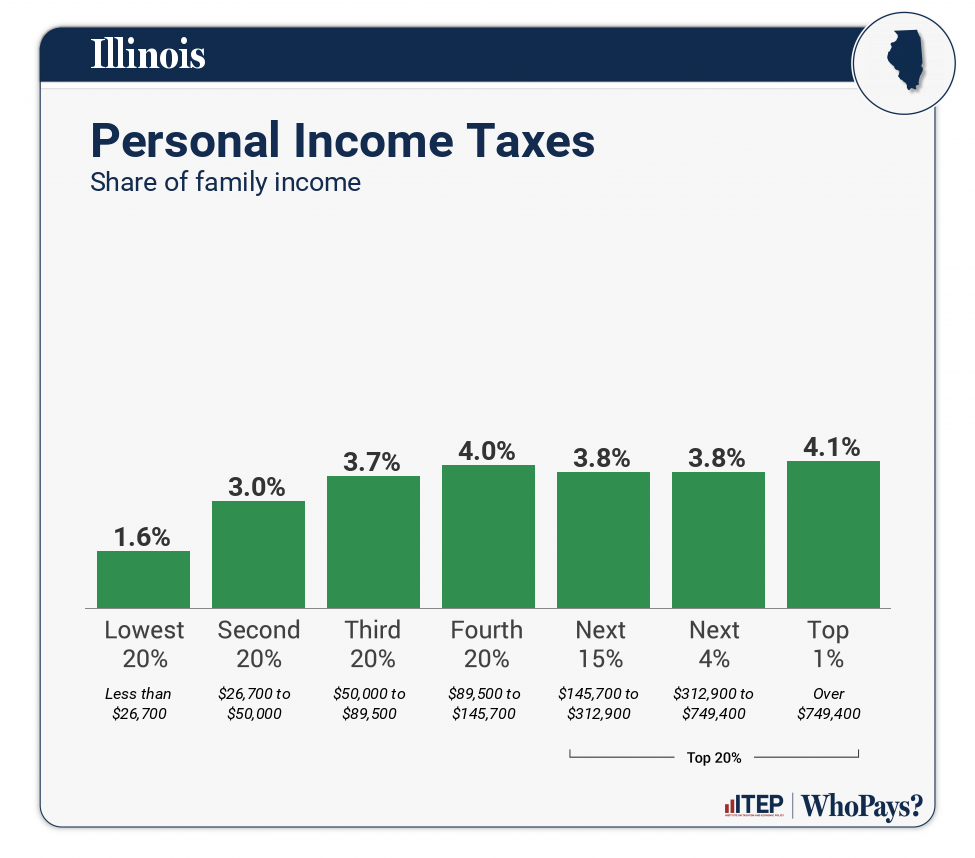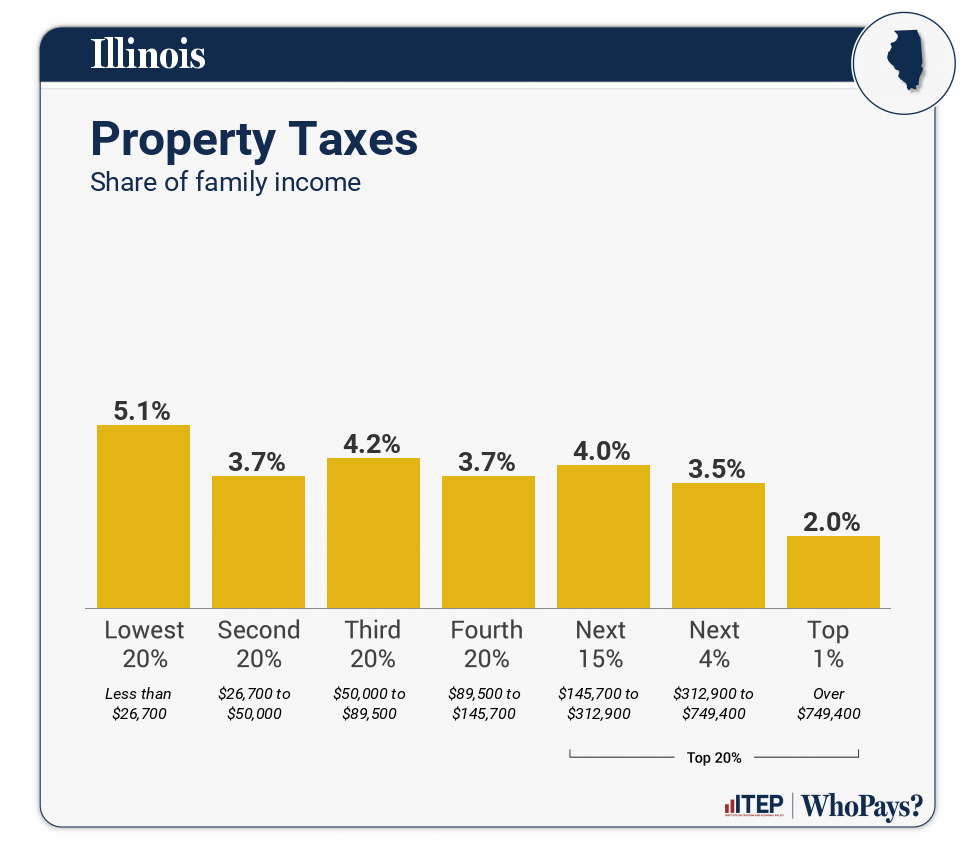Illinois: Who Pays? 7th Edition

Illinois
Download PDF
State and local tax shares of family income
| Top 20% | |||||||
| Income Group | Lowest 20% | Second 20% | Middle 20% | Fourth 20% | Next 15% | Next 4% | Top 1% |
| Income Range | Less than $26,700 | $26,700 to $50,000 | $50,000 to $89,500 | $89,500 to $145,700 | $145,700 to $312,900 | $312,900 to $749,400 | Over $749,400 |
| Average Income in Group | $14,400 | $38,100 | $68,300 | $118,500 | $197,600 | $456,100 | $1,817,300 |
| Sales & Excise Taxes | 7.9% | 5.6% | 4.7% | 3.6% | 2.8% | 1.6% | 0.7% |
| General Sales–Individuals | 4% | 3.4% | 3.1% | 2.4% | 1.9% | 1% | 0.3% |
| Other Sales & Excise–Ind | 3.1% | 1.5% | 1.1% | 0.7% | 0.5% | 0.3% | 0.1% |
| Sales & Excise–Business | 0.7% | 0.6% | 0.6% | 0.5% | 0.4% | 0.3% | 0.3% |
| Property Taxes | 5.1% | 3.7% | 4.2% | 3.7% | 4% | 3.5% | 2% |
| Home, Rent, Car–Individuals | 4.8% | 3.4% | 3.9% | 3.4% | 3.6% | 2.9% | 0.8% |
| Other Property Taxes | 0.4% | 0.3% | 0.3% | 0.3% | 0.4% | 0.5% | 1.2% |
| Income Taxes | 1.7% | 3.1% | 3.8% | 4.1% | 3.9% | 3.9% | 4.4% |
| Personal Income Taxes | 1.6% | 3% | 3.7% | 4% | 3.8% | 3.8% | 4.1% |
| Corporate Income Taxes | 0.1% | 0.1% | 0.1% | 0.1% | 0.1% | 0.2% | 0.3% |
| Other Taxes | 0.2% | 0.1% | 0.1% | 0.1% | 0.1% | 0.1% | 0.1% |
| TOTAL TAXES | 14.8% | 12.6% | 12.8% | 11.6% | 10.8% | 9.1% | 7.3% |
| Individual figures may not sum to totals due to rounding. | |||||||
ITEP Tax Inequality Index
ITEP’s Tax Inequality Index measures the effects of each state’s tax system on income inequality. According to this measure, Illinois has the 8th most regressive state and local tax system in the country. Income disparities are larger in Illinois after state and local taxes are collected than before. (See Appendix B for state-by-state rankings and the report methodology for additional detail.)
Tax features driving the data in Illinois
|
Requires combined reporting for the corporate income tax but excludes profits booked overseas, including in tax haven countries
Personal exemption is targeted to low- and middle-income taxpayers
Refundable Earned Income Tax Credit (EITC)
Non-refundable property tax credit
Levies a business franchise tax
Levies a state estate tax
|
|
|
Mismeasurement of home value in the property tax tilts in a regressive direction
Real estate transfer tax does not include higher rate on high-value sales
State sales tax base includes groceries, though taxed at a lower rate
No property tax “circuit breaker” credit for low-income taxpayers
All retirement income is exempted from the personal income tax
Comparatively high combined state and local sales tax rates
Comparatively high reliance on property taxes
Comparatively low-income tax exemptions
Local sales tax bases include groceries
Personal income tax uses a flat rate
No Child Tax Credit (CTC)
|




